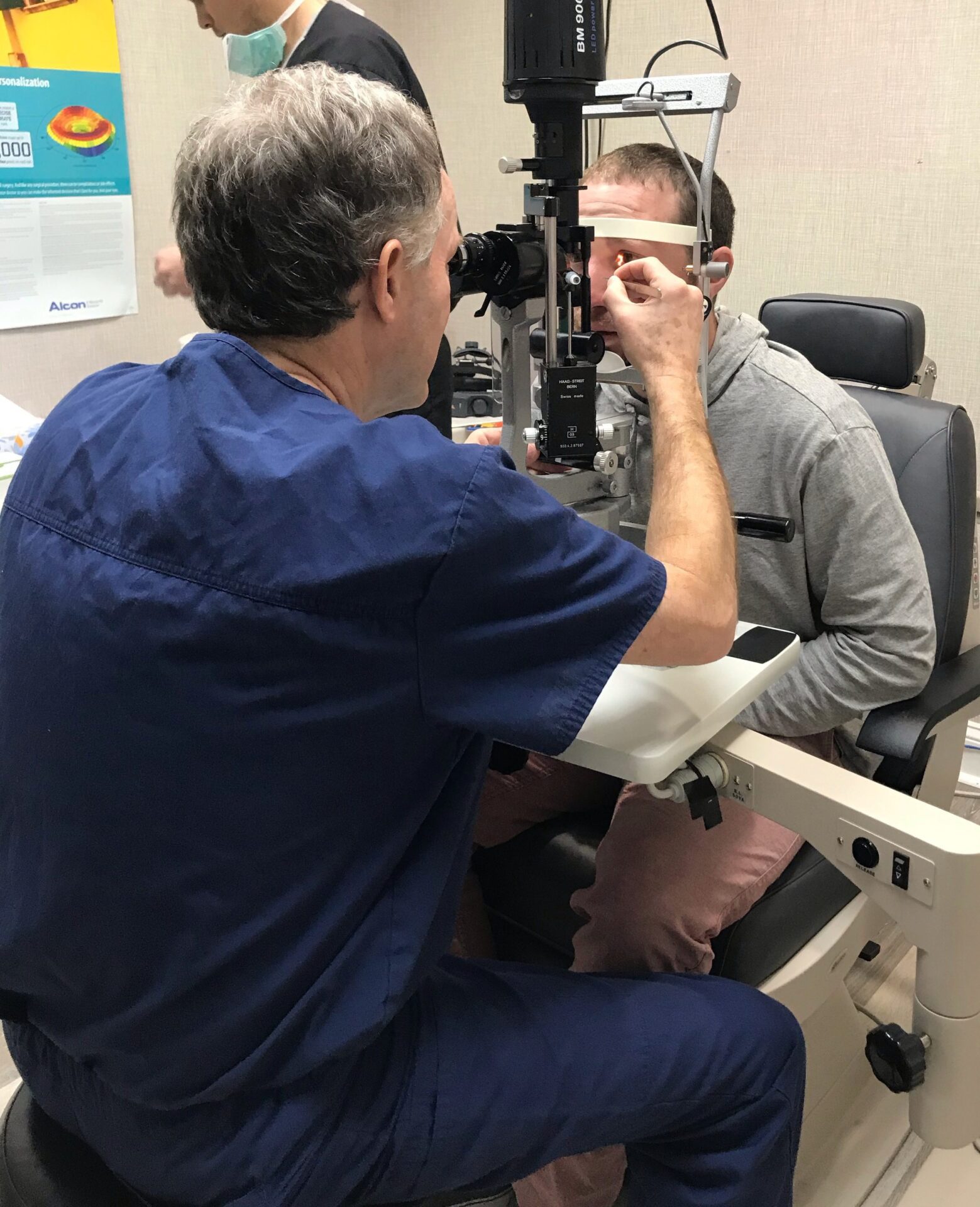Almost everyone over the age of 40 eventually struggles with the onset of presbyopia (literally, “aging eye”). This is the normal aging process of the eye that makes it harder to focus clearly on close objects. Reading a menu or trying to see your smartphone screen, becomes a challenging and frustrating task.
When using (and losing) magnifying eyeglasses, or readers, becomes too annoying, people often wonder what options there are to reduce their dependence on glasses. One option is called monovision (or some surgeons refer to it as blended vision). This type of vision can be achieved with contact lenses, refractive surgery such as LASIK, or with artificial lens implants called intraocular lenses (IOLs).
Most people have a dominant eye (one that you prefer to see with if you had to close one eye). With monovision, the vision in your dominant eye is corrected for distance vision, while your other eye is intentionally left somewhat nearsighted to allow you to see close objects. Both eyes still work together, allowing you to see clearly at any distance. While this way of seeing may sound complicated, many people find they adapt well to this technique. In fact, with both eyes open, they may not be able to tell which eye is set for distance and which is set for near.
However, monovision is not for everyone. Some people find they simply cannot adapt to it. This is why eye doctors usually recommend trying monovision with contact lenses first before committing to surgery for presbyopia correction or monovision IOLs as part of cataract surgery.
If you are considering monovision—or blended vision—keep in mind that because one eye is focusing at one distance while the other is focused at another, you may lose some depth perception. Also, you might still need to use reading glasses in certain cases, such as reading small print.
An ophthalmologist can thoroughly evaluate your eyes and discuss your vision needs to help you find the best vision correction option for you.
This information is provided by the American Academy of Ophthalmology.
Dr. Neil B. Griffin and Dr. Sarah E. Griffin are leading ophthalmologists and specialize in cataract and LASIK surgery in Myrtle Beach, South Carolina. Both our ophthalmic surgeons are committed to providing world class surgical technology and offer the most advanced vision diagnostics to the North and South Carolina areas. Dr. Neil Griffin and Dr. Sarah Griffin are both board certified by the American Board of Ophthalmology, Fellowship trained and members of the American Academy of Ophthalmology.
Griffin Eye Center offers the latest in cataract surgery with the most advanced Intra-Ocular Lenses available and the new RX Sight Light Adjustable Lens for cataract surgery. The center offers a state-of-the-art on-site LASIK suite for the best Laser Vision Correction possible and offers more options for individualized Laser Vision Correction.
To learn more visit LASIK or to see if you are a candidate visit: LASIK Questionnaire.
